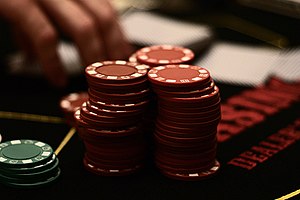Harm Reduction Strategies For Gambling

Anyone who gambles may be at risk of developing problems – under the right set of circumstances.
The only way to remove the risk completely is not to gamble at all. However, if you choose to gamble, there are ways that you can lower the risk.
Quick tips for reducing harm. Buy less so you use less. Buying large amounts of a drug may be cheaper, but you could end up using more than you want to simply because it’s there. Set a time limit before you start. If you choose, say, to stop drinking at 10:00 p.m., watch the time, remind yourself of your time plan, and stick to it.
Consider the following steps to keep your gambling safe.
Harm Reduction Strategies For Gambling Loss

- Set limits on the amount of money and time spent gambling. STICK TO THEM.
- Leave your credit and bank debit cards at home. Don’t bring along “extra” money.
- If you are losing, don’t chase your losses.
- If you are winning, remember the odds are against you keeping your winnings. Quit while you are ahead. Winning happens by chance.
- Balance gambling with other leisure activities.
- Treat gambling as entertainment, not as a way to make money or pay debts.
- Gamble sober.
- Don’t borrow money to gamble.
- Gamble only with money you can afford to lose and consider it part of your entertainment budget
- Take breaks regularly so you don’t get too focused on gambling. Remember you need to eat and drink and sitting too long in one position is not good for your circulation.
- Don’t gamble alone. Play with friends who don’t have a problem with gambling.
- Don’t gamble if you are upset, depressed, angry or in other ways emotionally at risk.
- If you find yourself breaking any of these guidelines, stop gambling at once, and give yourself some time away from the games to get some distance and think about what you are doing.
- Identifies a range of harm prevention and reduction strategies that Council can support in addition to the Planning Scheme. Purpose The Policy aims to: identify Council’s gambling harm reduction commitments and provide specific guidance in relation to their application.
- Of the strategy to achieve the greatest impact on the reduction of harms. Key governance documents 5. A more definitive list of activity related to the National Strategy is set out in the Gambling Commission’s quarterly Implementation Updates.3 These documents set out more detailed project-by-project progress updates. These explain the.
- A strategic and holistic harm reduction strategy for gambling using the lens of social practice perspective may instead focus on acknowledging and altering the availability, form, and interactions between all the elements of gambling practice.

(Source: CAMH Problem Gambling Project)

Harm Reduction Strategies For Gambling Addiction

We Can Help!
CALL TODAY.
613-967-4734
Monday – Friday 8:30 a.m. to 4:30 p.m.
Ontario Problem Gambling 24/7 Hotline:
1-888-230-3505
Many regions have policies and programs to limit exposure to gambling and protect people from gambling harms. At the same time, regions may allow the promotion of gambling through advertising and marketing. For instance, the broadcasting of sports events may be accompanied by gambling commercials, and gambling company logos may be displayed on the field and on players’ uniforms.
A variety of programs have been used to prevent and reduce gambling harms. Some regions have well-developed school-based programs for teens and young adults to prevent the development of gambling problems. Public awareness campaigns aim to influence people’s attitudes and knowledge about gambling. However, many of these campaigns have yet to include guidelines on safe gambling. There is weak evidence that these campaigns can influence gambling behaviours.
Stronger evidence is available for resources that target features of gambling products or venues. For example, pop-up messages that warn players of risky gambling behaviours can be effective. Messages have more impact if they are displayed in the centre of the screen, interrupt play, and require players to actively remove them.
Self-exclusion programs are available to people who have concerns about their gambling behaviours. These programs allow people to ban themselves from specific gambling venues or websites for a period of time. There is evidence that self-exclusion results in less gambling and improved well-being; however, self-exclusion programs are under-used in many regions.
Download the two-page Gambling Resources Factor summary (PDF)
Also available in: Francais Spanish Mandarin
Download the Gambling Resources Factor section from the Conceptual Framework of Harmful Gambling (PDF)
Download the complete Conceptual Framework of Harmful Gambling (PDF)